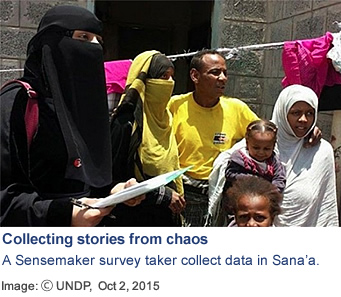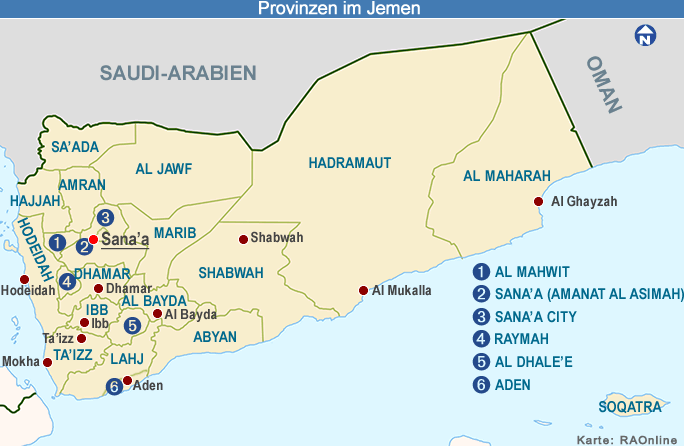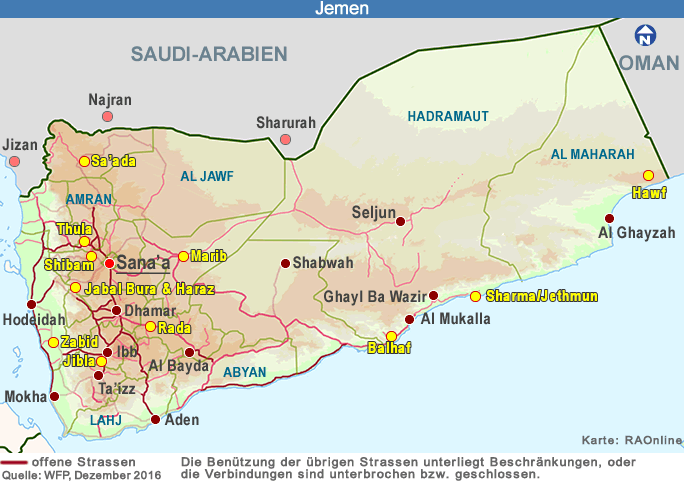| Welt: Länderinformationen Jemen |
 |
Jemen Berichte - Reports |
|
 |
Asien Weitere Informationen |
|
| Berichte über den Jemen - Reports about Yemen |
 |
| Collecting stories from chaos |
In this blog series, UNDP experts and practitioners share their experiences and views on innovation in development practice.
 |
| The war here in Yemen has caused over 4,000 civilians deaths and 1.4 million Yemenis to be internally displaced since March. To examine the impact of this war, UNDP Yemen turned to citizens to hear their daily hardships and identify opportunities to restore livelihoods.
But the survey we're conducting is very different from traditional assessments and our respondents are interested and curious.
We're using Sensemaker, a software suite that discovers patterns among people's stories. Because of the need to adapt programs to respond to emerging needs, it is important to understand dynamic contexts and a diversity of perspectives. |
|
This software focuses on values and people's experiences, which is quantified quickly without the built-in prejudices some decision makers may bring to the table.
Sensemaker is being conducted in partnership with the UNDP Innovation Team and Cognitive Edge across six priority governorates. So far, 200 micro-narratives have been collected in the capital city Sana'a with support from the Youth Leadership Development Foundation (YLDF).
It will not be easy to access all locations as the conflict moves rapidly, but collecting these stories now, capturing the personal voice of Yemenis themselves, means that they can be heard and we can focus on people rather than politics or warring parties.
A lot of stories shared relate how people are helping each other, and as a young Yemeni, this gives me hope that we are keeping our humanity amidst the crisis. These are some of the many micro-narratives that moved me:
Due to the war and the harsh situation, me and my friends [decided] to make food for people to help them break their fast- to give the people something to smile about and lighten their hearts…We logged the names of the poor families that needed help. We collected money and clothes for them. This made me happy because we could help people.
We are from a place in Saada. An Apache helicopter hit my house so we fled to Sana'a, but most of my immediate family is still there. People asked us why we did not leave sooner, but we had no money. The day we reached Sana'a was the day that Nuqom mountain was bombed from the air. I told myself I was running from death and I would meet it for sure. We reached Bab al Yemen and stayed there for a few days. Then we stayed for 27 days in two other places, all of us living in one room - 15 of us.
I am a nurse. Because of the war I am out of work, so I made a place in my home - an area where I can do my practice. I give medical attention to infants and children in my area. I also work as a midwife and help expectant mothers. I do this to keep myself busy during these times and to help the people. I feel like this is my duty to my people and my nation.
Despite the difficulties of losing jobs, struggling to find water and fuel and afford basic necessities, individuals can make a difference in their communities. We are looking to identify champions and enablers to promote livelihoods stabilization and economic recovery, in a way that is directly informed by our beneficiaries.
Although we here in Yemen consider the operation a success (and have learned a lot about our country and its resilience), we are always mindful of the fact that just getting the data and providing statistical links is not enough. This exercise must lead to action, to finding solutions to the recurring problems here.
 |
| Source: UNDP Yemen, Oct 2, 2015 |
| Links |
 |
 |
 |
Externe Links |
|





